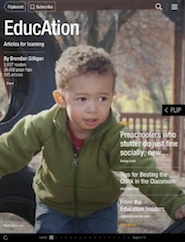So, here is I Got Schooled practice #2 – Right Balance of Leadership.
Through his MNS Foundation, Shyamalan spent five years studying what is succeeding in closing the education gap that depended only on factors inside the classroom itself and that were scalable. He discovered closing the achievement gap can’t be figured out by examining just any single practice by itself; five things must be implemented together to have any substantive effect.
Shyamalan uncovers five factors present in schools he found were significantly closing the education gap for inner city children and children of color. He provides just tons of example schools, clinical studies, data and statistics, detailing each of these five factors.
These posts are highlights for each of these five factors for folks who might feel they are too busy to read the whole book … and strongly whet your appetite for doing so. The five factors are:
- Effective teachers – dropping poor, hiring good
- Right balance of leadership
- Feedback that is timely and consistent
- Smaller schools
- More time in school
A large number of successful schools and programs are covered in the book, including: Knowledge is Power Program (KIPP), Uncommon Schools, Achievement First/Endeavor, FirstLine schools, North Star Academy, Arthur Ashe, Los Angeles Green Dot Public Schools, and more.
Factor #2 – LEADERSHIP, the right balance of
- School leadership is second only to classroom teaching as an influence on learning
- “Superman principals” are not scalable
- There is not a single documented case of a school successfully turning around its achievement trajectory in the absence of strong leadership
- First, leaders vary in large and consistent ways – the most successful teams work under the most successful bosses (McKinsey & Company study)
- Second, the boss’s most important job isn’t communicating strategy or even hiring and firing – it is teaching skills that persist
- Motivating a team of subordinates isn’t nearly as important as improving their skills
- The difference between a good principal and a mediocre one is nearly as big as that between a great teacher and a poor teacher
- A principal effects hundreds of students, instead of a few dozen
- Principals are profoundly important
- The most effective principals are also the ones engaging in the most “negative teacher selection,” i.e., firing the lemons
- The most effective principals also improved the instructional success of existing teachers
- Least effective principals seldom leave the system – they just move to different schools, further widening the achievement gap
- Existing, thorough application processes do not insure a consistent level of success
- Principals should be primarily responsible for the instruction of teachers
- But the typical urban principal spends less that 20 percent of their workday on instruction
- Principals in the top systems around the world spend 80 percent of the school day on improving instruction in the classroom (McKinsey & Company study)
- Schools need an Operations Manager to handle food service, discipline, custodians, paperwork, to free principals to help teachers help students learn
- Such an administrative management model is scalable
- Brett Peiser founder of Uncommon Schools network, on leaders: “Great leaders know culture eats strategy for lunch.”
- Culture is everything distinctive to a place; it’s every way you know you are in an uncommon school; it’s rigorous in involving and aligning everything and everyone
- Culture is beyond advertising brochures, it must have enough force and buy-in to overwhelm its students’ environments outside the school
- A culture of high expectations seems almost important enough to earn a place as one of the keys to closing the achievement gap
- Someone has to make certain that all teachers understand and support a uniform school culture in their bones
- Again, “Culture eats strategy for lunch.”
- Consistency in students’ experience from class to class and grade to grade; and quality control of this consistency is really important
- Both unquestioned authority and humanity are equally important, i.e., caring and respect for students
- There are techniques and behaviors that produce desirable results consistently, like Lemov’s Taxonomy, Teach Like A Champion, and they should be known and used
- See also The Wooden Way, the legendary UCLA basketball coach’s system
- And these practices are scalable
Hoping you are finding these interesting and perhaps useful.
Up next: Factor #3 – Feedback
Tom










